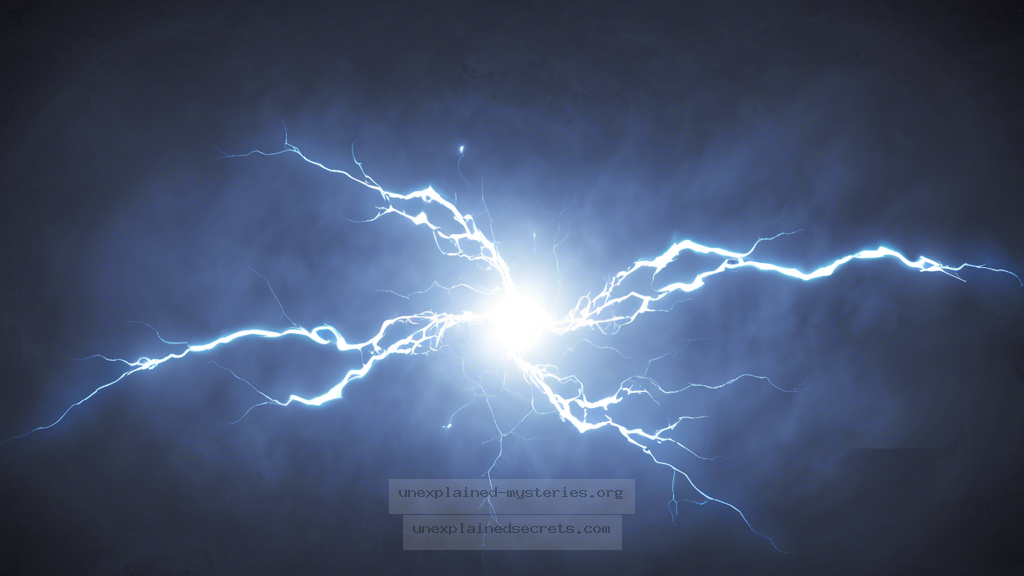What Causes the Mysterious Phenomenon of Ball Lightning?
What Causes the Mysterious Phenomenon of Ball Lightning?
Ball lightning is one of the most perplexing natural phenomena that has baffled scientists and laypeople alike for centuries. This mysterious glowing sphere often appears during thunderstorms and has been reported to float, dart, or even explode without clear explanation. Understanding ball lightning is crucial not only for advancing scientific knowledge but also for improving safety during severe weather. This post dives deep into the enigma of ball lightning, exploring its historical context, core theories, documented cases, and ongoing research that seeks to unravel its secrets.
Historical Context of Ball Lightning
Ball lightning has been documented for hundreds of years, with accounts appearing in various cultures around the world. Notably, one of the earliest recorded observations comes from the 19th century. In 1838, a young scientist named Thomas Edison described a glowing sphere that reportedly floated through his family home during a thunderstorm. This incident was just one of many, as ball lightning has been mentioned in folklore and scientific literature alike, capturing the imagination of many.
Despite its long history, the scientific community has struggled to explain the phenomenon. Early explanations included everything from phosphenes (optical illusions) to hallucinations caused by high voltage electricity. However, as technology has advanced, scientists have begun to gather more reliable accounts and data, leading to a renewed interest in studying this enigmatic phenomenon.
Core Concepts: What is Ball Lightning?
Ball lightning is typically described as a luminous sphere, varying in size from a golf ball to several feet in diameter. It usually appears during thunderstorms, often following a lightning strike. The most common characteristics include:
- Color: Generally white or yellowish, but can also take on red, blue, or green hues.
- Movement: It can hover, float, or move erratically and sometimes even pass through solid objects.
- Duration: Ball lightning can last from a few seconds to several minutes.
Despite these descriptions, its exact nature remains elusive. Some researchers propose that it may be a form of plasma, while others suggest that it could be a chemical reaction involving silicon and other elements found in the atmosphere during a thunderstorm.
Theories Explaining Ball Lightning
Various theories have been proposed to explain the formation and behavior of ball lightning. Here are some of the most prominent ones:
The Plasma Theory
This theory suggests that ball lightning is a type of plasma formed during a lightning strike. Plasma is a state of matter where gases become ionized, creating charged particles that can emit light. According to this theory, the intense heat and pressure from a lightning bolt could create a localized plasma ball that behaves like a glowing sphere.
The Silicon Hypothesis
Another intriguing explanation involves silicon. When lightning strikes the ground, it can vaporize the silicon in the soil, creating tiny silicon nanoparticles. These particles may aggregate and emit light, forming a ball of light. This hypothesis offers a chemical perspective on the phenomena, which could explain why ball lightning is often seen near the ground.
The Electromagnetic Field Theory
This theory posits that ball lightning is a product of electromagnetic fields generated by thunderstorms. Some researchers suggest that the electrical fields could trap ions and create a stable, glowing sphere. This is supported by observations of ball lightning occurring in environments with high electromagnetic activity.
Documented Cases of Ball Lightning
Numerous documented cases of ball lightning further complicate the understanding of this phenomenon. Here are a few notable examples:
| Case | Date | Location | Description |
|---|---|---|---|
| Thomas Edison Incident | 1838 | U.S.A | A glowing sphere floated through Edison’s family home, causing panic. |
| St. Elmo’s Fire | Various | Global | Often confused with ball lightning, this phenomenon occurs on pointed objects during storms. |
| Ural Mountains Incident | 1900s | Russia | Witnesses reported a glowing ball moving through a village, eventually exploding. |
These cases reflect the wide range of experiences people have reported over the years, often leading to confusion between ball lightning and similar phenomena like St. Elmo’s Fire. The variability in descriptions and interpretations adds to the mystery.
Practical Implications and Evidence
The quest to understand ball lightning has practical implications, particularly in the fields of meteorology and safety. If scientists can definitively explain the phenomenon, it could lead to improved predictive models for thunderstorms and potentially hazardous situations associated with lightning activity. Furthermore, understanding ball lightning could enhance safety protocols for people living in storm-prone areas.
Research into ball lightning is ongoing, with some scientists attempting to recreate the phenomenon in laboratory settings. For example, experiments that simulate lightning strikes in controlled environments have produced small plasma spheres, which offer insight into how the phenomenon might occur in nature. These experiments may pave the way for safety guidelines and protocols.
Alternative Perspectives on Ball Lightning
Some skeptics argue that ball lightning is nothing more than folklore or misinterpretation of other natural phenomena. They contend that many reports of ball lightning could be attributed to electrical discharges or other observable occurrences that have been exaggerated or misunderstood. This skepticism highlights the need for rigorous scientific investigation and skepticism to separate fact from fiction.
Common Misconceptions and Clarifications
Despite its prevalence in popular culture, several misconceptions about ball lightning persist:
- Myth: Ball lightning is a form of St. Elmo’s Fire.
- Fact: While both phenomena involve electrical discharges, they are distinct. St. Elmo’s Fire appears on pointed objects and is more stable.
- Myth: Ball lightning cannot be studied scientifically.
- Fact: While challenging, ongoing research and technological advancements allow scientists to study and experiment with ball lightning.
Best Practices for Investigation and Study
For researchers interested in studying ball lightning, several best practices can enhance the quality of investigations:
- Document sightings: Collect detailed reports from witnesses, including time, location, and environmental conditions.
- Use technology: Employ high-speed cameras and other recording devices during thunderstorms to capture potential ball lightning events.
- Collaboration: Work with meteorologists and physicists to create interdisciplinary approaches to research.
By following these practices, researchers can build a more comprehensive understanding of ball lightning and its underlying mechanisms.
Future Developments and Ongoing Research
The study of ball lightning is far from over. With advancements in technology and increased interest in atmospheric science, researchers are continually uncovering new information. Recently, scientists have been using advanced imaging techniques and computer simulations to explore how ball lightning might form and behave under different conditions. Additionally, interdisciplinary collaborations are becoming more common, allowing for a richer analysis of this phenomenon.
As studies progress, we may finally gain insights that can demystify ball lightning, leading to advancements in both theoretical understanding and practical applications. Ongoing research is vital in separating myth from reality and expanding our knowledge of this captivating scientific anomaly.
Conclusion
Ball lightning remains one of the most intriguing scientific anomalies, bridging folklore and hard science in a quest for understanding. With a rich historical context, varied theories, and real-world documented cases, the phenomenon poses unique challenges and opportunities for researchers. As science continues to advance, we remain hopeful that the mysteries surrounding ball lightning will one day be unraveled, illuminating not just the nature of this phenomenon, but also providing vital insights into the complexities of our atmosphere. 🌌
Other Articles
Recent Posts
- What Happened to Flight MH370? The Conspiracy Theories That Still Haunt Us
- What Secrets Lurk Within the Walls of the Infamous Trans-Allegheny Lunatic Asylum?
- What Evidence Supports the Existence of Bigfoot in the Pacific Northwest?
- What Happened to the Indus Valley Civilization? Unraveling the Mysteries of Ancient Urban Life
- Can Telepathy Be Scientifically Proven Through Laboratory Evidence?







